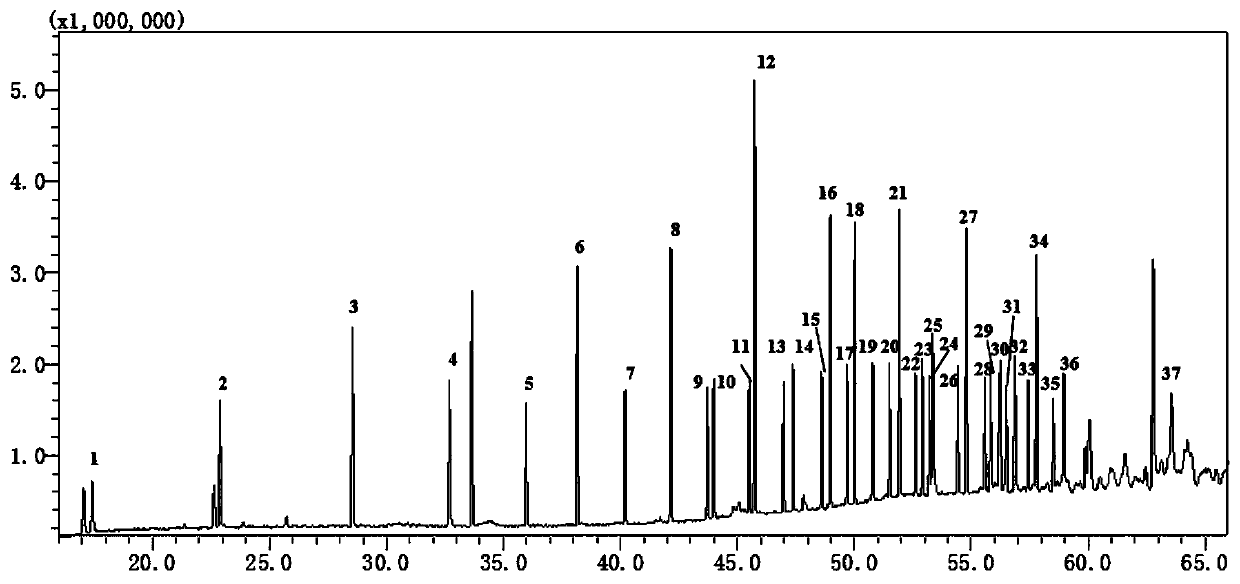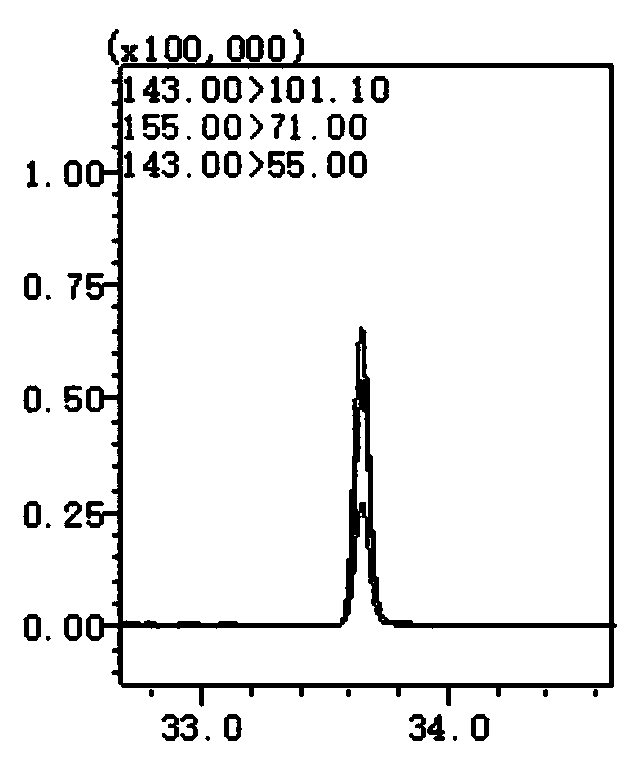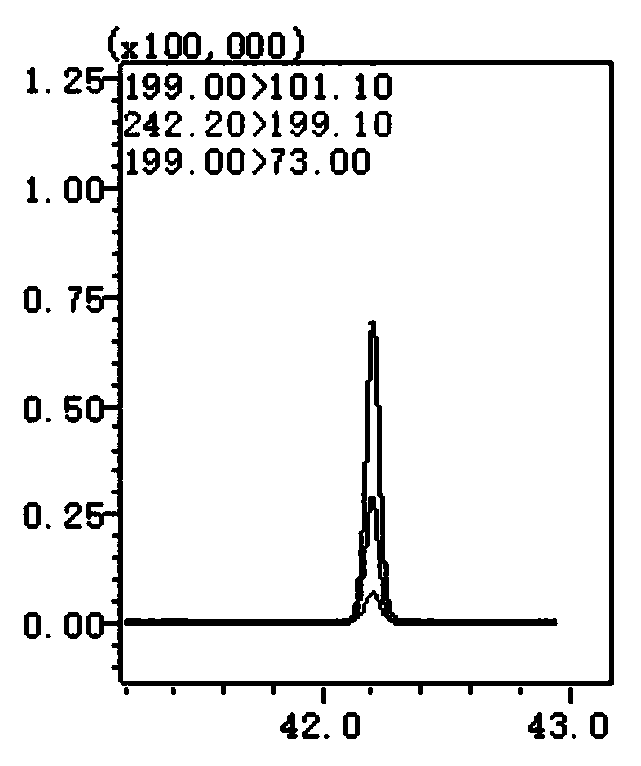Method for determining fatty acid in rice by using gas chromatography-mass spectrometry
A gas chromatography and mass spectrometry technology, applied in the field of fatty acid determination, can solve the problems of poor accuracy, no accurate determination of fatty acid components, uneven content, etc., to achieve the effect of improving accuracy
- Summary
- Abstract
- Description
- Claims
- Application Information
AI Technical Summary
Problems solved by technology
Method used
Image
Examples
Embodiment
[0064] (1) Grind the rice seed sample until pulverized, and accurately weigh 0.1 g of the pulverized sample in a 15 mL dry screw-top glass tube;
[0065] (2) Add 3.0 mL of n-hexane, 3 mL of acetyl chloride-methanol solution with a volume fraction of 10%, and 0.3 mg of dibutylhydroxytoluene to the sample, and tighten the screw cap of the glass tube;
[0066] (3) After shaking and mixing, place it in a water bath at 80°C for 2 hours. During this period, take it out and shake it once every 20 minutes to realize fatty acid methyl esterification, take it out after the water bath and cool it to room temperature;
[0067] (4) Transfer the reacted sample solution to a 50mL centrifuge tube, wash the glass tube twice with 3mL sodium carbonate solution, combine the sodium carbonate solution in a 50mL centrifuge tube, shake and mix well, and the concentration of the sodium carbonate solution is 6%. ;
[0068] (5) Centrifuge at 4000r / min for 10min, absorb 1mL of the supernatant through a ...
PUM
 Login to View More
Login to View More Abstract
Description
Claims
Application Information
 Login to View More
Login to View More - R&D
- Intellectual Property
- Life Sciences
- Materials
- Tech Scout
- Unparalleled Data Quality
- Higher Quality Content
- 60% Fewer Hallucinations
Browse by: Latest US Patents, China's latest patents, Technical Efficacy Thesaurus, Application Domain, Technology Topic, Popular Technical Reports.
© 2025 PatSnap. All rights reserved.Legal|Privacy policy|Modern Slavery Act Transparency Statement|Sitemap|About US| Contact US: help@patsnap.com



